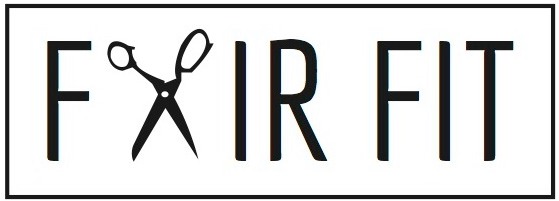The Fair Fit Method Sewing + Design - How I Teach Pattern Fit and Alterations in the Courses
What about Specific Alterations for my body?
While I know having to go through the process of changing a pattern can be the last thing you want to do when you'd rather be sewing, what I love about pattern alterations is that they can still be a creative part of the process. They create an opportunity to use your problem solving and critical thinking skills.
So pattern alts aren't just great for clothing, they are good for the brain!
In one conversation with a student, we talked about how easy it is to overthink fit and really put yourself through the rigor of studying it. Luckily we have lots of options and solutions in the world to work with, back when I was learning sewing I had no idea how to find the resources I needed to change my garments efficiently. The resources and learning tools we can find now will be a great help, and even more so if you are willing to approach it with a light touch and see adapting garments as another opportunity to be creative.
How I teach Pattern Alterations
A significant problem garment sewers find when garments don't fit is that to solve the problem the sewist now needs another skill set.
Pattern alterations are a skill set comparable to pattern drafting. The good news is you don't have to learn it at the same level of commitment and investment as pattern drafting. Rather I believe it's helpful to think through the problem with a creative approach (as opposed to a harsh self critical one) to find the solution that works. Thinking about the problem and solving it builds confidence when you independently find a way to make the garment work better for you.
I actually love it when I hear a student says, "I knew that already" or "ah! That's what I was going to do." And that's because I think it is more important that you learn to trust your visual skills to find the solution and to solve the problem on your own. I want you to trust yourself, so that when you are at home you aren't slowed by self doubt.
Analyzing Fit
Maybe some self doubt developed in sewing because it has been such an independent craft usually practiced alone. And in professional circumstances the trade secrets are held close to the vest so there hasn't been a lot of collaboration between home sewists and professionals. It wasn't until I was employed to sew professionally that I really saw the divide. But even in my professional career, I never had a set of rules to follow, rather, it was my problem solving approach and steps to think through fit that made me valuable to my clients who needed clothing alterations.
How to Apply the Analysis to the Pattern
Some of the videos in the Fair Fit Method courses offer solutions and alterations that have been discovered during the check fit module for previous students. As more students take the course and ask questions, I hope to have more recommended adaptations to show you.
The videos in the courses are filmed in real time in my studio to enable me to be responsive and adaptive to student fit and draping questions that arise. During our course durations, alterations and demos are added as they are needed, creating an archive of fit, design, and pattern customization lessons. When you do your check fit, if something isn't right, you are going to take a picture and send it to me so I can send you the recommended adjustment.
The flexible nature of this structure for the courses allows me to add new videos when necessary to address student questions as they arise, creating personalized, in-depth video support as we work through course. Every season the course is updated with answers to student questions, so there is always more to learn. Sometimes Fair Fit students with different body types appear in the videos, and you will get the experience how to pattern and draping works for different people.
In the course, I will show you how to change the paper pattern.
As well as show you how to drape the adjusted piece and other ways to trouble shoot the fit on the form.
Within the course Learn and Make the Fair Fit Dress, there is also a video with archived alts from previous students and how to trouble shoot your fit through interpretation and experimenting with approaches I have tested on clients and other students.
Imagine knowing more about how to fit for your own body as well as other people and how to customize a pattern more fluidly by applying draping skills? While having fun learning new methodologies and creating garments that reflect different creative approaches to design.
That's why I'm sharing my personal practice in the Fair Fit Method courses. I personally experienced a lot of freedom from self critique working this way, and enjoy more options since I'm not dependent strictly on the designs offered by the commercial pattern lines.
If you are interested in taking courses in the Fair Fit Method, the next opportunity to enroll begins soon. You can visit https://www.fairfitmethod.com/ to learn more and read all about the program and full curriculum. If you want to know right away when enrollment opens again, sign up below and you will receive email updates, articles, and notifications when registration begins.
Coming up: Why we make 2 garments, and a look at more examples of what you can make!
Photography by Carolynn Amy Siebert and Lily Brooks and the other named photographers from the article. All Images ©Andrea Eastin Fair Fit TM and are used exclusively for fairfitstudio.com. Never use or post images or my writing without my written permission.























